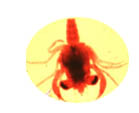|
       

|
Return to Research Page
Current Publications and Theses
- Johnson, E. and D. Eggleston. Population demographics
and movement of blue crabs in sat marsh creeks. Marine Ecology Progress
Series (in press).
- Eggleston, D. B., G. W. Bell, A. Amavisca. 2005. Interactive effects of episodic hypoxia and cannibalism on juvenile blue crab mortality. Journal of Experimental Marine Biology and Ecology (in press).
- Bell, G. W. and D. B. Eggleston. 2005. Species-specific avoidance responses to the chronic and episodic hypoxia. Marine Biology 146: 761-770.
- Forward, R. B. Jr., N. B. Reyns, H. Diaz, J. H. Cohen, D. B. Eggleston. 2005. Endogenous swimming rhythms underlying secondary dispersal of early juvenile blue crabs Callinectes sapidus. Journal of Experimental Marine Biology and Ecology 316: 91-100.
- Burkholder, J, D. Eggleston, H. Glasgow, C. Brownie,
R. Reed, G. Melia, C. Kinder, G. Janowitz, R. Corbett, M. Posey, T.
Alphin, D. Toms, N. Deamer. (2004). Comparative impacts of major hurricanes
on the Neuse River and Western Pamlico Sound ecosystems. Proceedings
of the National Academy of Sciences 101:9291-9296.
- Forward, R. B. Jr., N.B. Reyns, H. Diaz., J. H.
Cohen and D. B. Eggleston. (2004). Endogenous swimming rhythms of
juvenile blue crabs, Callinectes sapidus as related to horizontal
transport. Journal of Experimental Marine Biology and Ecology
299:63-76.
- Reyns, N. B. and D. B. Eggleston. (2004) Environmentally-controlled,
density-dependent secondary dispersal in a local estuarine crab population.
Oecologia 140:280-288.
- Bell G. W., D. B. Eggleston and T. G. Wolcott. (2003).
Behavioral responses of free-ranging blue crabs to episodic hypoxia.
I. Movement. Marine Ecology Progress Series 259:215-225.
- Bell G. W., D. B. Eggleston and T. G. Wolcott. (2003.)
Behavioral responses of free-ranging blue crabs to episodic hypoxia.
II. Feeding. Marine Ecology Progress Series 259:227-235.
- Chaves, J. C. and D. B. Eggleston. (2003). Blue
crab mortality in North Carolina’s soft-shell industry: biological
and operational considerations. Journal of Shellfisheries Research
22:241-249.
- Etherington, L. and D. Eggleston. (2003). Spatial
dynamics of large-scale, multi-stage crab dispersal: determinants
and consequences for recruitment. Canadian Journal of Fisheries
and Aquatic Sciences 60:873-887.
- Etherington, L. L., D. B. Eggleston, and W. Stockhausen
(2003). Partitioning loss rates of early juvenile blue crabs from
seagrass habitats into mortality and emigration. Bulletin of Marine
Science 72(2):371-392.
68. Eggleston, D. B. (2003). Introduction to the Proceedings of the
Blue Crab Symposium. Bulletin of Marine Science 72(2):261-263.
- Seitz, R. D., R. N. Lipcius, A. H. Hines and D. B.
Eggleston. (2001). Density-dependent predation, habitat variation,
and the persistence of marine bivalve prey. Ecology 82:2435-2451.
- Blackmon, D. C. and D. B. Eggleston. (2001). Factors
influencing planktonic, post-settlement dispersal of early juvenile
blue crabs. Journal of Experimental Marine Biology and Ecology
257:183-203.
- Eggleston, D. B. (2000). Hurricanes, high school
students, and the blue crab. Pages 43-50 In D. Haase and B. Wojenowski
(eds.), Proceedings of the Conference on K-12 Outreach from University
Science Departments, The Science House, NC State University,
Raleigh, NC 27695-8211.
- Etherington, L. L. and D. B. Eggleston. (2000). Large-scale
blue crab recruitment: linking postlarval transport, post-settlement
planktonic dispersal, and multiple nursery habitats. Marine Ecology
Progress Series 204:179-198.
- Taylor, D. L. and D. B. Eggleston. (2000). Effects
of hypoxia on an estuarine predator-prey interaction: foraging behavior
and mutual interference in the blue crab Callinectes sapidus
and the infaunal clam prey Mya arenaria. Marine Ecology
Progress Series 196:221-237.
- Xie, L. and D. B. Eggleston.
(1999). Computer simulations of wind-induced estuarine circulation
patterns and estuary-shelf exchange processes: the potential role
of wind forcing on larval transport. Estuarine, Coastal and Shelf
Science 49:221-234.
- Eggleston,
D. B., W. E. Elis, L. L. Etherington, C. P. Dahlgren, M. H. Posey.
(1999). Organism response to habitat patchiness and diversity: habitat
colonization by estuarine macrofauna. Journal of Experimental
Marine Biology and Ecology 236:107-132.
- Eggleston, D., L. Etherington,
W. Elis. (1997). Organism response to habitat patchiness: species-
and habitat-dependent recruitment of decapod crustaceans. Journal
of Experimental Marine Biology and Ecology 223:111-132.
|





